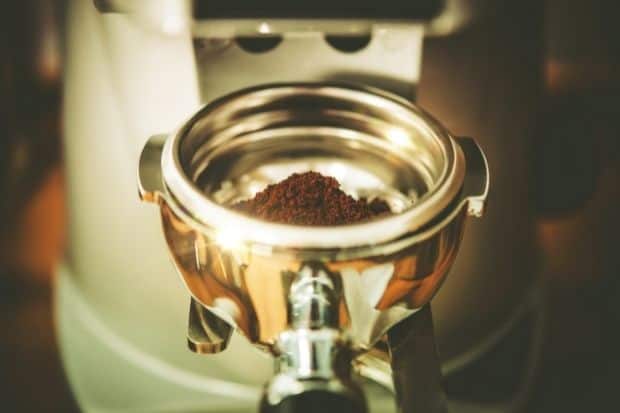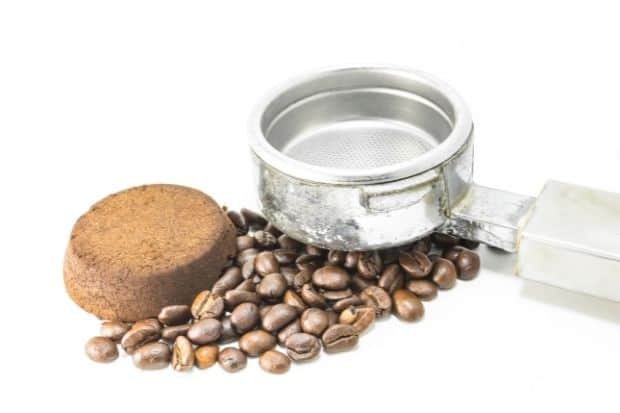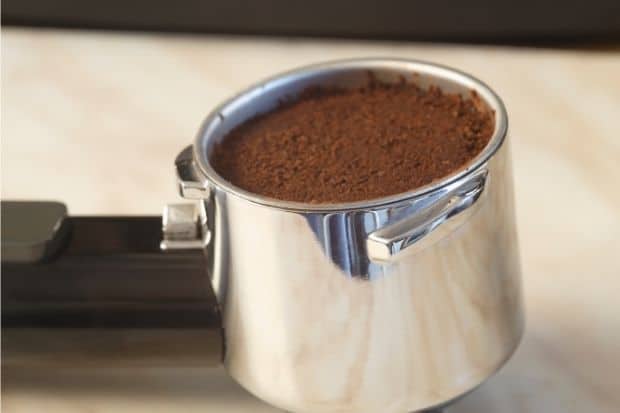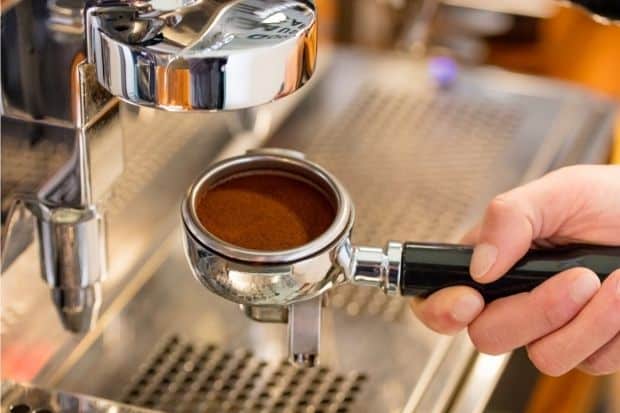Last Updated on December 4, 2023
How do you achieve the perfect cup of espresso? It doesn’t always come down to the beans. If your machine doesn’t have the right setup, no fresh beans or technique will save that shot of espresso. The portafilter is one part of an espresso machine that can be switched out. That makes portafilter selection a very important choice for home baristas who want to make excellent espresso.

Does Portafilter Size Matter?
Yes, portafilter size does matter. Many espresso machines don’t have much range in diameter, with 58 mm being the standard. But the depth of the basket makes a difference. Deeper baskets allow you to pull more espresso. They may also reduce channeling, while making it trickier to get an even tamp on the coffee bed.
Wondering what size of portafilter basket you should get? There’s no one right answer here, as a lot of it comes down to your taste preferences and the machine’s design. Let’s take a deeper look into espresso portafilters and how the diameter, depth and basket style affect your shot.
How Do Portafilters Work?
Portafilters are metal filters that fit into your espresso machine. A precise amount of coffee grounds are put in the coffee filter and tamped down, creating a coffee puck. Hot water under pressure is forced through the grounds. Coffee, both liquid and the very finest particles of grinds, extract from the bottom of the filter. Portafilters are designed to perform well at high pressure and high temperatures, creating a consistent and delicious espresso shot.

Portafilter Sizing
What Are the Common Portafilter Sizes?
Portafilters range from 49 mm to 58 mm. The most common size is 58 mm.
Some prosumers swear by the smaller diameter. These have deeper baskets, which create a thicker coffee puck. Some people find that thicker pucks are more resistant to water channeling, but it can be tricky to tamp these pucks evenly.
Meanwhile, the large 58 mm filters have their own advantages. Due to the greater surface area, the coffee is exposed to higher extraction forces. This can create a more consistent espresso from one pull to the next.
Why It’s Important To Figure Out the Portafilter’s Size
It’s possible that your espresso machine does not clearly display the portafilter size, but this is information you need. It can tell you how much coffee the filter is designed to handle. This is critical for people fine-tuning their pull.
The filter size is also vital for choosing an espresso tamper. You want a tamper that fits into the basket with just a little clearance. This enables you to press a firm coffee puck without struggling to get the tamper back out.

Measuring Your Portafilter
Diameter
Use a ruler or measuring tape to measure the filter basket diameter. An easy way to do this is to anchor one end at the 0 mark and slide the other end across the filter. The largest number is the widest point, or the diameter. You’ll want to measure this in centimeters.
Once you have that number, subtract 0.75 mm. Then round to the nearest number. When in doubt, round down. That’s the size of tamper you need.
Diameter isn’t the only important number here. You’ll also want to consider basket capacity, which is determined by the diameter and the depth. A shallow portafilter can’t hold as much coffee as a deeper one.
Capacity
You’ll need an electronic scale that is precise down to the gram.
Start by setting your filter on the scale and hitting ‘tare.’ Next, lightly heap ground coffee into a mound in the filter. Swipe your finger across the top of the mound, knocking the excess off. Weigh the total. For the best results, do this three times and calculate the average. That tells you how many grams of coffee the espresso machine can hold. When brewing espresso, aim for that exact number or go 1 gram higher or lower. Why would you do this? Some people get better performance and reduced channeling if they slightly tweak the amount of coffee.
There are people who swear by a slightly smaller amount and others who prefer a gram more. You’ll need to try both ways to see which one performs best for you.
Single, Double or Triple Shot?
Most machines let you swap out the portafilter basket sizes between single, double, and triple shots. The size of a portafilter you choose depends on preference and what recipe you’re following.
- Single shots: 7-12 grams of coffee. These may have smaller holes and a slower flow speed.
- Double shots: 14-21 grams of coffee. A commercial and prosumer standard and a good general-purpose choice.
- Triple shots: 21+ grams of coffee (usually 30-35 grams). The deepest models available.
Will This Portafilter Fit Your Machine?
Most espresso machine manufacturers produce their own portafilters that are guaranteed to fit. But you’re not necessarily tied to the company. Once you know the diameter and shot capacity, you can find another filter, right? Well, not quite. There’s one important factor left: basket styles. These include:
- Pressurized portafilter: Commonly seen with inexpensive espresso machines. With a pressurized portafilter, pressure comes from the filter design, not the machine itself. This style is more forgiving of grinding and tamping errors.
- Regular or spouted portafilters: These older-style filters funnel the espresso down a chute. They tend to be rugged and heavy, with better heat retention and temperature distribution.
- Bottomless portafilter: A newer kind of filter where you can watch the espresso drip from the bottom of the basket. Bottomless portafilters, or naked portafilters, produce 50% more crema than spouted styles.

Buyer beware! That espresso portafilter you’ve been eyeing may be the right style and fit on paper, but it could still not be compatible. This is particularly an issue at the extremes of the market: the most budget-friendly machines and the luxury-priced ones. Keep your receipt until you’ve had a chance to test the filter out.
Wrap Up
Portafilter baskets may seem like very simple pieces of technology, but when it comes to pulling a shot of espresso, every detail counts. Now that you know how to measure your filter and the differences between the kinds of portafilters, you’re all set, right?
Well, all the technical considerations in the world don’t matter as much as what you taste when you sip a fresh shot. If you aren’t completely satisfied with the coffee experience, you can troubleshoot by adjusting the grams in the basket, tamping with a different technique, or switching portafilters. Ultimately, a great espresso is both art and science. Experiment until you find the setup that makes coffee magic.


